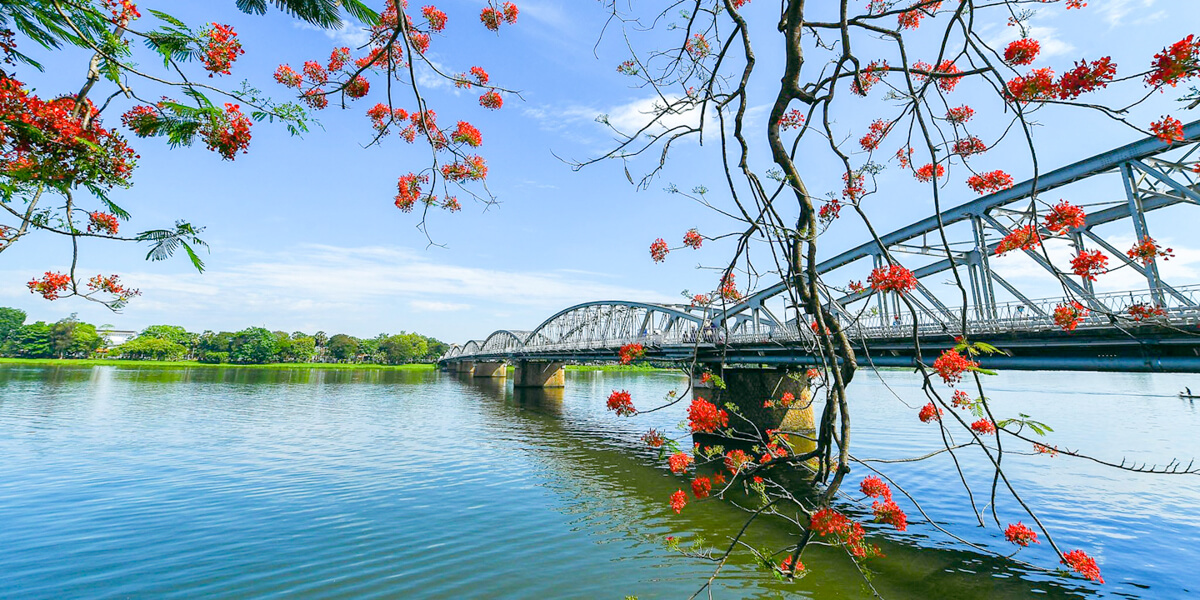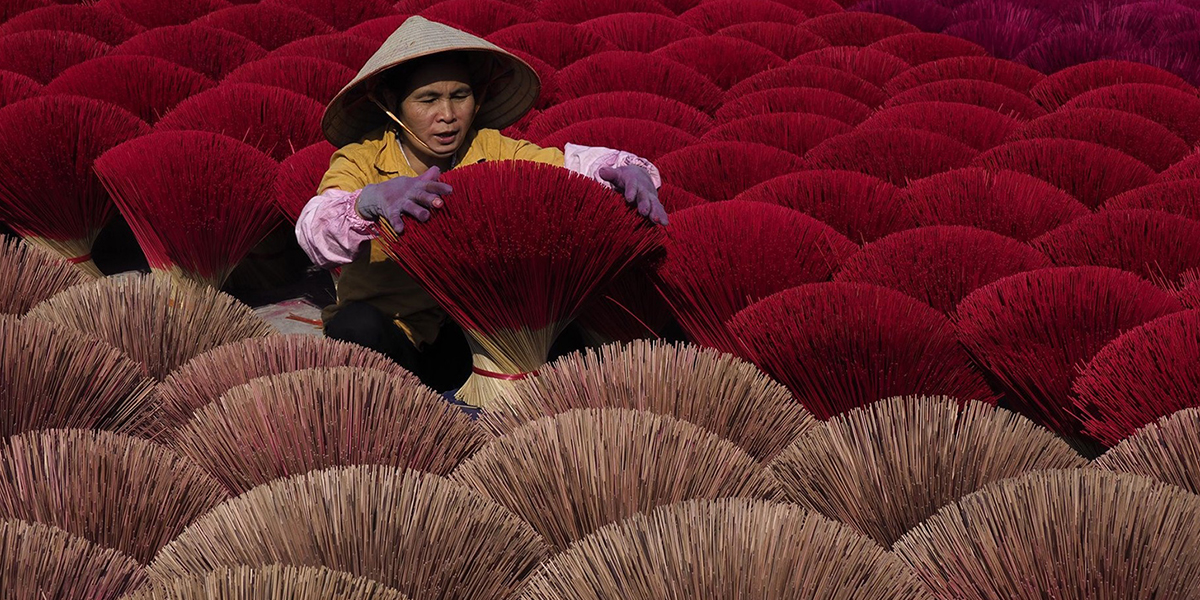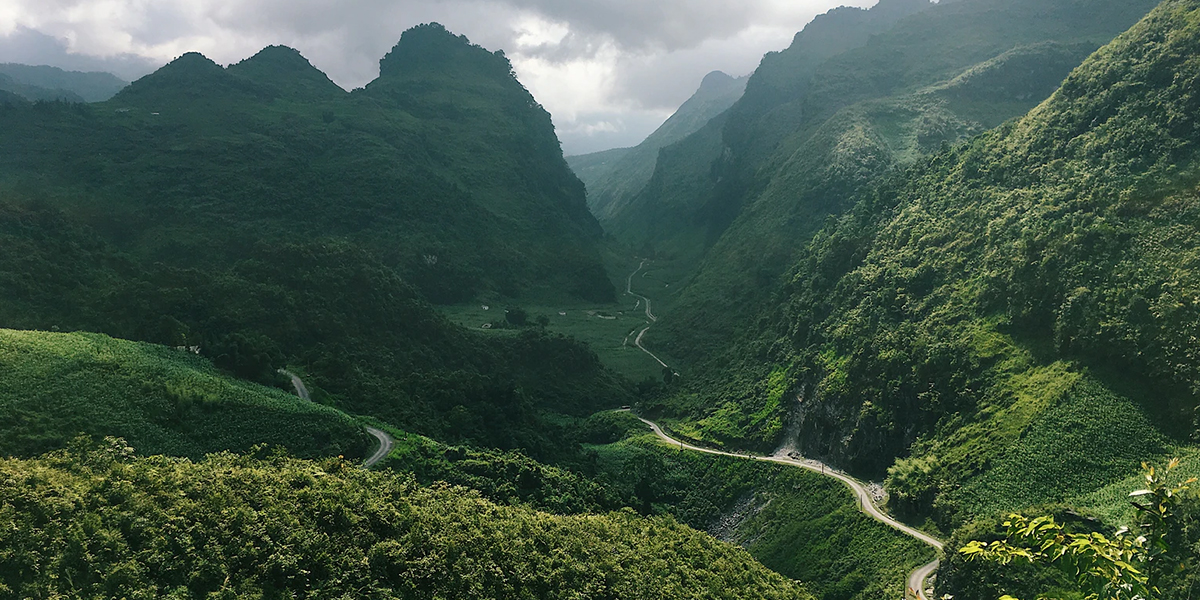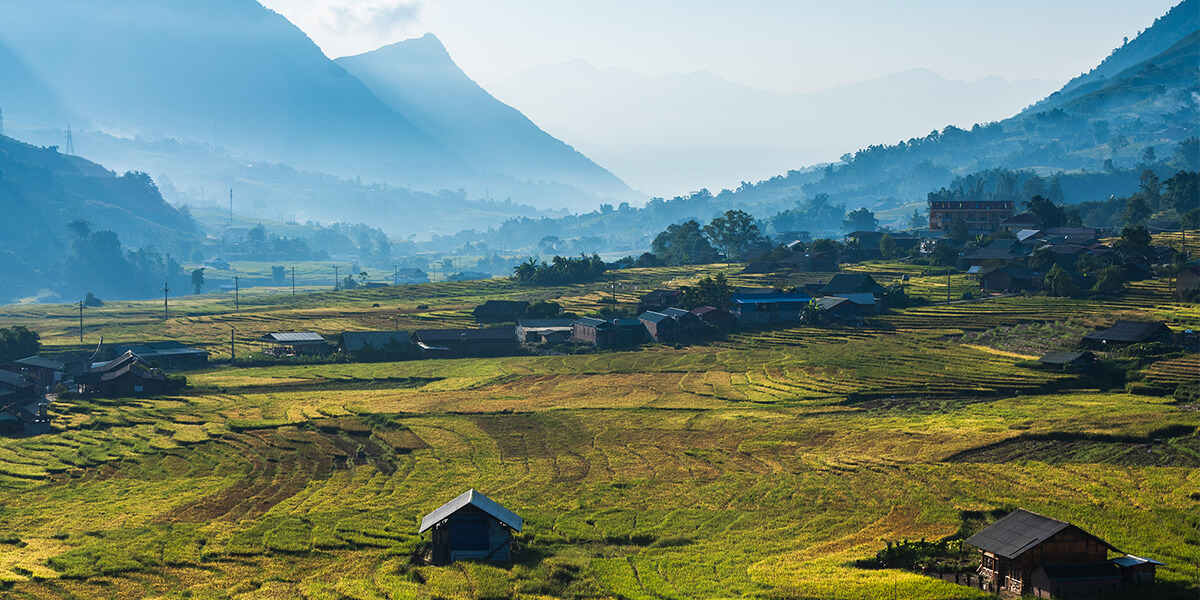As the largest of the four main gates of Hue Imperial Citadel, Noon Gate is located to the south of the citadel, only reserved for the king or the emissaries in the past. This is a symbolic work for the history, culture, and tourism of Hue city in particular, and the art of architecture and sculpture of Vietnamese people in general. Ngo Mon Gate is one of the relics of the Nguyen Dynasty that still exists today, with many special meanings and values that you can find out below.
I - History of Noon Gate Hue

Ngo Mon gate photo - Source: hinhanhlichsu
Noon Gate was built in 1833, when the Nguyen court reorganized the entire Hue Imperial Citadel and Forbidden City. There were Nam Khue Platform and Can Nguyen Palace, but these two buildings were completely demolished to make room for the new entrance. Like many other works for the king in Vietnam, Ngo Mon gate faces the south because this direction brings good omens for the emperor according to the idea of feng shui.
A huge amount of brick, stone, tile, wood, lime, etc. was mobilized to build Noon Gate, even the construction materials are classified as special. More honey was added to mortar than usual, and Trau oil was used as a glue to join the outer layers of brick and stone to increase the durability and aesthetics of the work.
At the three central arches, large bronze beams were used to strengthen the bearing capacity of this largest door in the palace, something unprecedented in previous construction. It is all those great investments that have created a beautiful Noon Gate, still standing firmly and proudly even though it’s been more than 170 years of history with many ups and downs. This work was severely damaged after the Battle of Mau Than in 1968, then repaired as the original in 1970, and in 2012 was temporarily closed to undergo a restoration that lasted until 2019.
Noon Gate used to be the platform where the Nguyen kings stood to look over the square, the Citadel or the Flag Tower, to watch the military parade, the ceremonies of honoring the students who passed the national tests, or of bestowing calendars, etc. This work also witnessed many important historical events, most notably the abdication ceremony of King Bao Dai on August 30, 1945, when he gave up the royal seal and sword, marking him the last king of the last Vietnamese feudal dynasty.
II - Discover the unique architecture of Noon Gate Hue

Source: CestFou
Ngo Mon gate has a typical complex architectural style, built on the principle of feng shui coordinated direction (northwest - southeast). This work shows the quintessence of ancient Vietnamese architecture and sculpture, looking like a magnificent castle but still in harmony with the natural landscape and the soul of Hue people. Ngo Mon gate is U-shaped, built of brick and stone combined with brass bearing bars, above is the magnificent Ngu Phung Pavilion system with 2 floors built entirely of ironwood.
1 - The Noon Gate platform
The foundation system of Ngo Mon platform is built with mallet bricks, Thanh stones and mortar, combining brass bars. This work has a height of more than 5m, with a bottom of 57.96m and a total squared U-shaped ground area of about 1,400m2. This place has a total of 5 entrances, all of which are designed in a rolling arch style and mostly covered with Thanh stones. The three main doors in the middle are placed parallel to each other, namely Ngo Gate (center), Ta Giap Gate (left) and Huu Giap Gate (right), and two auxiliary gates - Ta Dich Gate (left) and Huu Dich Gate (right).
Built of stone, the center entrance of Noon Gate has a golden color and used to be reserved for the kings only, but was completely locked after King Bao Dai abdicated in 1945. Meanwhile, the two gates of Ta Giap Mon and Huu Giap Mon used to be for mandarins (left) and war generals (right), now they are the ways for you to enter Hue Citadel. At the two ends of these three, there are systems of 70 rectangular copper beams with a length of 2.3 - 5.4m, as well as cross-sections of about 16cm x 13cm for large-type, and about 13cm x 8.5cm for small-type.
In each of the two wings of the Noon Gate, there is a door running through like a tunnel folding in the shape of an L. They are called Ta Dich Mon and Huu Dich Mon, built in an arched way and are about 25m long, used to be the passages for soldiers, elephants and horses. Each entrance door is arranged with circular windows with a diameter of 87cm, stylized according to the word “longevity” on the outer wall of Ngo Mon gate. They are placed diagonally at an angle of 300°, corresponding to the perpendicular bend of the passage, in order to increase the brightness inside.
Inside Noon Gate, there is also an open-air stair system from the ground up to the platform, built on both sides of the tower body and located completely behind. Made entirely of Thanh stone, the 5.25m wide stair is arranged deep inside compared to the front wall of the Imperial Citadel, each hierarchy consists of 21 steps and each step is 22cm high. Around the base of the platform is also surrounded by a system of decorative balustrades with hollow bricks, glazed with 5 colors.
2 - Five Phoenixes Pavilion in Ngo Mon gate

Source: VnExpress
Five Phoenixes Pavilion is the place in Noon Gate where the kings used to sit when attending important ceremonies, so named because this work is likened to 5 perching phoenixes. In fact, this is an architectural complex of 9 pavilions with 2 floors that are seamlessly connected together, made entirely of wood and quite similar in style despite the different scale. There are 5 main and 4 sub-pavilions, divided into 3 rows at right angles to each other, in which the main row is the middle part located at the bottom of the letter U - the shape of Ngo Mon gate.
In this main row, the central part is a 3-room 2-wing pavilion with a height that is significantly higher than the rest of the buildings, roofed with golden glazed tiles. The other rows and pavilions are actually corridors that have been upgraded to match that main building, cleverly linked and roofed with turquoise glazed tiles. The entire Five Phoenixes Pavilion is built on a 1.14m high platform, over the 5m high foundation of Noon Gate. The frame consists of exactly 100 columns, all made of ironwood and painted with gilded lacquer, of which there are 48 pillars passing through both floors.
The lower floor of Five Phoenixes Pavilion is mostly empty except for the central building, which has a door on the front and walls on the other sides, ensuring privacy when the king used to attend the ceremony. According to the traditional principle, the space in the right corner of the U-wing is placed a restored drum, while the one in the right corner stores the original bell casted in 1822, nearly 1.8m high and 815kg in weight. The upper floor is fully covered, only the middle pavilion has a door but there are many windows with quite diverse shapes, such as round, fan-shaped, and so on.
It is these windows, along with the wooden railing system on the upper floor and the flower bricks around the wall, that make the overall Noon Gate architecture delicate. The roof of Five Phoenixes Pavilion is also very elaborately decorated, with dragons covered with lime mortar and crockery, a calabash bottle with brilliant yellow color,... Other compartments of the roof, the edge and the gables are also decorated with many images of dragons, water dragons, bats holding money, flowers and leaves, etc., making the Ngo Mon gate seem more gentle and charming.
You may be interested in discover the famous museums in Hue
III - Tips for tourists when visiting Noon Gate

Source: Huetruly
1 - Opening hours & entrance fees
- Opening hours: 7am - 6:30pm & 7pm - 9pm
- Entrance fees:
+ Adults: 150,000 VND / ticket ($6.4)
+ Children: 30,000 VND / ticket ($1.28)
2 - Sites near Ngo Mon gate in Hue Imperial Citadel complex
Nghi Mon Gate
From Noon Gate, you will get to Trung Dao bridge made of bricks, at both ends of which are two Nghi Mon gates cast in bronze in 1833, under King Minh Mang reign. Each gate has 4 copper columns, decorated with delicate lotus and flying dragon shapes, above are glazed rectangular frames with brilliant yellow - white - blue colors. Trung Dao Bridge crosses Thai Dich Lake, which was originally dug to grow lotus and raise fish. This complex of works is not only a road dedicated to the emperor, but also a reminder of the concept of kingship under the feudal Nguyen Dynasty.
Dai Trieu Nghi Courtyard
Passing the Noon Gate then the bridge, there is Dai Trieu Nghi Courtyard with an area of over 3,000m² paved with solid Thanh stone, where in the past mandarins lined up for the king or to hold important ceremonies. The two sides of the yard have 2 rows of houses for them to rest, and rows of stone steles specifying the rank and titles, indicating the position of the mandarins to easily queue up quickly and orderly. The corners of the courtyard near the palace are two decorated bronze qilins plated with gold, solemnly placed in wooden glass cages, showing the majesty of the site.
Thai Hoa Palace
Built in 1805, this is the largest and most massive building within the Hue Citadel, visible from the Ngu Phu Pavilion on the Ngo Mon gate. Thai Hoa Palace symbolizes the power of the Nguyen Dynasty, used to be the place to organize major royal ceremonies such as coronation, king birthday, welcome ambassadors,… Inside, there are many objects and decorations plated with gold, along with the golden throne that passed 13 Nguyen kings. Behind the main hall of Thai Hoa Palace, there is also a small house, which is currently used to place a souvenir shop.
Noon Gate is one of the remaining architectural masterpieces in the royal complex of Hue, a testament to the traditional sculpture art with bold indigenous characteristics and national identity. This work has soon become an image associated with the ancient capital, a historical witness to a glorious period of the Nguyen Dynasty - the last feudal dynasty of Vietnam. Hopefully with the interesting information about Ngo Mon gate Hue above, you will have the most enjoyable trip with many memories.







.jpg) — Ha Bich
— Ha Bich




































